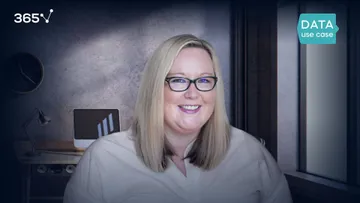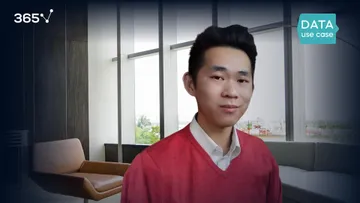Hi! My name is Giles. I'm an Oxford-trained medical physicist and data scientist turned Python instructor and the author of the 365 Python Programmer Bootcamp course.
I'm happy to join the 365 Data Use Cases series and, in this post, I'll tell you a bit more about my favorite data use case: advanced medical imaging.
We've also made a video on the topic that you can watch below or just scroll down if you prefer reading.
Data Science and Advanced Medical Imaging: DMP & MRI
Until recently, I worked as a research scientist, and a medical physicist. That's how I was introduced to DMP (Dextran‐magnetite particles) - a specialist type of contrast agent used in Magnetic Resonance Imaging (MRI). Without going into detail about how it works, it would be enough to tell you that DMP provides such a sensitive type of advanced medical imaging, that it enables you to image metabolism in a living body.
The fact that you can create a medical imaging system that could do that is quite amazing in itself. But what's really useful about it is that most disease affects in some way the metabolism of a body, especially cancer and heart disease. And those were precisely the areas I was focused on. So, in my line of work, we would collect huge amounts of data by doing advanced medical imaging. And that enabled us to:
- follow and watch metabolic pathways in areas of interest within a body
- see how they behaved in a healthy body
- and then compare that to how they behaved in a diseased body
The Role of Diagnostic Medical Imaging in Analysis
Overall, the aim was to see whether we could find any way of using the data that we gathered in the medical imaging analysis as a diagnostic for different types of cancers, for example. In the case of heart disease, we were looking to see whether we could somehow determine the amount of damage that had been done, for instance, following a heart attack. Of course, there were many challenges that we faced doing that MRI analysis but that is a topic for a whole new article.
But the data analysis toolset that you're learning does not restrict you to a specific industry. In fact, it can be applied to any field that you're interested in. Whether that's a business application or a scientific application, you use many of the same methods. That said, data science is a great field to be getting into and there's almost no limit to what you can achieve with it. So, if you're eager to learn more about data science and Python in particular, check out my YouTube channel. And, if you're looking to add some indispensable programming skills under your belt, you can sign up for my Python Programmer Bootcamp course.








